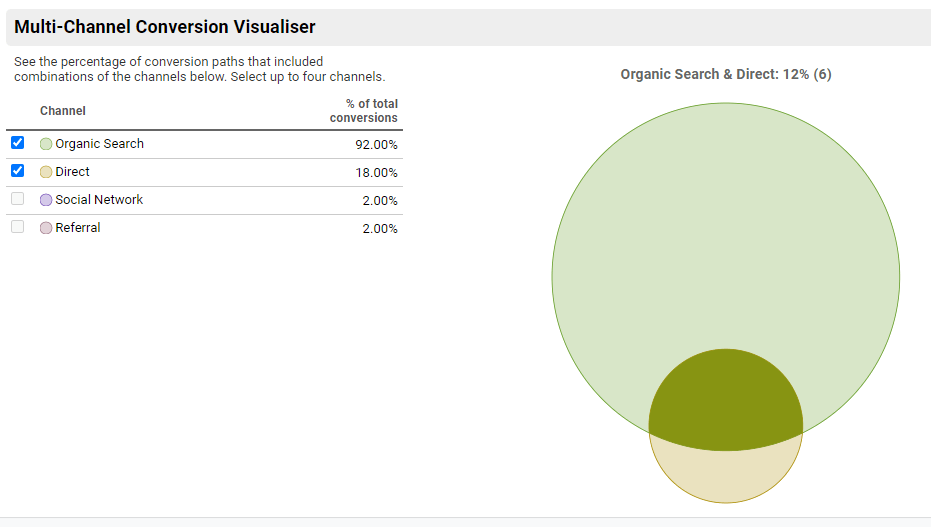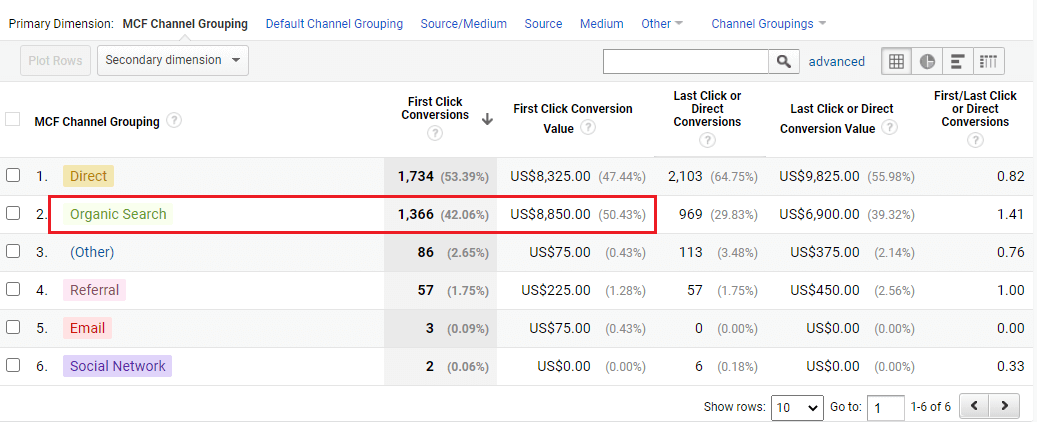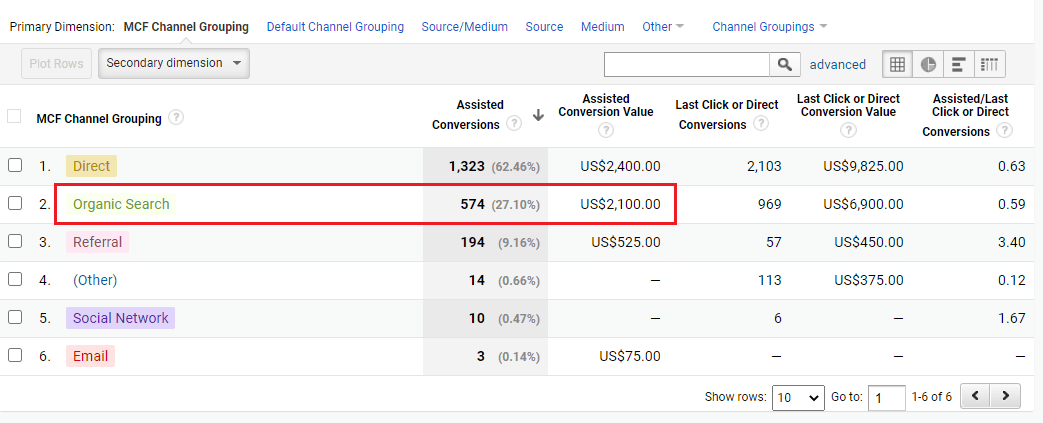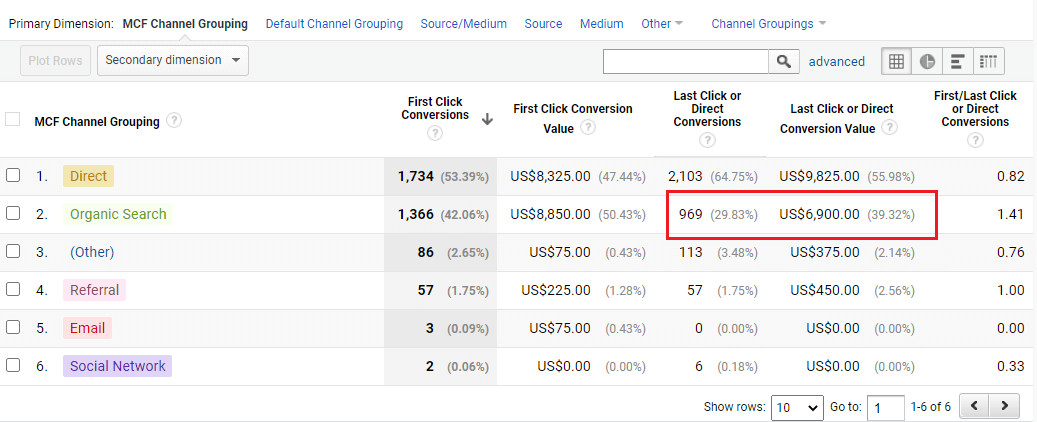“What’s the ROI of SEO?”
It’s one of the fundamental questions clients ask when an agency talks to them about SEO services. You’ve likely also been on the receiving end of this question during a one-on-one talk with a prospect.
How you address this question defines the value that you can deliver for your client’s business. But, why is it important to go have a clear understanding of SEO ROI when you’re talking to clients?
SEO is more than a buzzword in today’s marketing sphere. For digitally-savvy businesses, they already know search engine optimization as a ticket to capturing the attention of their customers. However, for those who are not as familiar with this, they need to see the tangible benefits of the service to their business. Showing the ROI of SEO is one way.
If you’re finding it difficult to move forward in a conversation with a client who needs more convincing about SEO, this blog will show you how to present the ROI of SEO.
What is a Good ROI for SEO?
This question gets thrown a lot, but to tell you the truth, there is no clear answer to this.
The return on investment for your SEO activities will depend on the business of your client. There are other factors to consider, such as the client’s goals and marketing spend.
One thing is for sure, though—SEO is a long-term investment. Any significant ranking movements can take at least two to three months, which means any traffic may not immediately translate into revenue. While this presents a challenge for most SEO agencies and digital marketers out there, it doesn’t necessarily mean knowing the value of SEO is out of reach.
How Do You Measure the ROI of Professional SEO Services?
Is there a way to find out the average ROI of SEO? The answer to this: It depends.
In paid advertising, calculating the ROI of your strategy can be straightforward because you can see how much you spent versus how many conversions you got. SEO is a different ballgame.
Most SEO experts refer to traffic as the ROI of their SEO efforts. After all, the goal of SEO is to make a website visible to customers who want to visit the website – targeted traffic. It’s your job as the agency to make clients see the connection.
1. Set Up Conversion Tracking
In this digital era, you don’t have to do most of the processes manually. There are SEO tools for agencies that you can use to monitor the effectiveness of your strategies, and one such tool is Google Analytics.
Google Analytics shows the behaviors that take place on and around your website – from traffic to conversions. That’s why this serves as an invaluable tool in measuring SEO ROI.
With Google Analytics, you have different ways to track conversions based on your client’s goals – website purchases, sign-ups, phone calls, or store visits.
Tracking website purchases is the most common, especially for businesses setting up an ecommerce website. It’s a bit tricky for websites that don’t sell products directly, but you have Google Analytics to thank for when you need to track conversions.
Let’s say you want to track the number of conversions for a client’s website and need to see the business impact of these results. With Google Analytics, you can set an action you want to track and attach a dollar value for every time this action is completed.
How do you determine the dollar value that you’ll be using to track your conversions? The simplest way to calculate is with this formula:
Revenue generated / Number of leads from the website = goal value
So if the monthly revenue generated for a client’s website is $25,000 and they received 100 leads for that month, the goal value you can assign is $250.
Note that this should only cover leads coming from Organic Search. You can determine which leads are coming from Organic Search with the Multichannel Funnels tab in Google Analytics.
Under the Conversions tab, you’ll find the Multichannel Funnels that show the percentage of conversions according to different channels: Direct, Organic Search, Referral, Social Network, and Email.
As you want to know the ROI for SEO, focus on conversions coming from Organic Search.
2. Dive Deeper into Your Conversions
While you can have numerical representations of how SEO was able to make a business impact, the metrics are not as straightforward. You need to dive deeper to truly understand what part SEO played in the results you’re presenting to clients.
Google Analytics allows you to show if the traffic you’re providing to clients equated to revenue through three ways: First Click Conversions, Assisted Conversions, and Last Click Conversions.
First Click Conversions refer to first interactions associated with a specific channel. If you find that Organic Search has a high number of conversions, this means it’s the first entry point of leads to a client’s website, which, in turn, requires continuous strategizing.
Assisted Conversions refer to the number of times a channel appeared in the conversion path but was not the final point of interaction that led to conversions. If Organic Search shows high numbers for this metric, it means SEO provides supplementary support in the conversion of leads. For example, visitors found your client’s website on search results then came back later to make a transaction after seeing a remarketing ad.
Last Click Conversions show the number of conversions completed for a specific channel. If you have Organic Search with high conversions, this means your SEO strategy is crucial in completing sales for your client’s website.
By diving into these metrics, you’ll have a more granular understanding of how SEO contributed to revenue generation.
3. Calculate the Investment Made
You can’t calculate the ROI of SEO without knowing how much was invested in the strategy.
But, didn’t you say SEO means free traffic? Yes, but this doesn’t mean businesses don’t pay to get their SEO done. This is where you and SEO costs come in.
You need to account how much the client spent on the strategy so you can show their SEO return on investment.
If you’re working with a client, the investment they made simply means how much you charged for your SEO service.
Calculating Everything
Now that you know which metrics to track, it’s time to calculate the return on investment for SEO.
Here’s an example:
Conversions value on analytics show $7,950 for Organic Search. Your client spent $1,000 on their monthly SEO service. You simply calculate the SEO ROI with this formula:
Conversion value – Investment / Investment x 100 = ROI
So if your client spent $1,000 for their monthly SEO and the conversion value shows $7,950, you simply calculate the investment:
$7,950 – $1,00 / $1,000 x 100 = 695%
Your client’s return on investment from SEO is 695%, and it’s something you can proudly show the next time you report progress. This is what we’ll be discussing next.
Reporting: Showing the Impact of Your SEO
It’s one thing to know about your client’s SEO ROI; telling them about it is a completely different story.
Your work as an SEO agency doesn’t end with executing the campaigns for your clients. In fact, clients are more inclined to know the results of your campaigns. That makes SEO reporting all the more important.
Your SEO report provides your clients with a clearer view of their campaigns, detailing what was accomplished and how every tactic made an impact.
While most agencies would associate SEO return on investment to the monetary value alone, there are other key SEO metrics that you can use to showcase the impact of your strategies, such as keyword ranking improvements, backlinks, and click-through rates.
Highlight Important Accomplishments
When you’re ready to send a report that shows the ROI of your SEO service, be sure to focus on what’s important to your client’s business. This means toning down the vanity metrics.
Vanity metrics are often hollow digits that have little to no contribution to how your SEO efforts are generating revenue for your clients. These are often the easy ones to achieve but not entirely relevant to the business.
So when you’re reporting, instead of saying “Your website was able to achieve x amount of traffic,” be more specific with your report:
“Your website has X amount of traffic and Y conversions, showing a return on investment of Z%.”
Key Takeaways: Be Transparent with Your Client’s SEO ROI
Showing the ROI of your SEO services represents more than the impact of your strategies; it also provides your clients with a strong reason to keep working with you.
There’s a lot to dive into when talking about return on investment for SEO. But if you want to show that your strategy is truly worth their marketing spend, keep these pointers in mind:
- Utilize conversion tracking with focus on Organic Search in Google Analytics.
- Know your numbers. Be sure you have input on how much investment was made in your client’s SEO strategies.
- Prepare an SEO report packed with the right data. Don’t include vanity metrics that show no impact on your client’s SEO results.
At the end of the day, clients are running businesses, and they need to make sure they know what they’re getting for their money. A good SEO ROI report can take away the guesswork and put your clients and prospects more at ease with your strategies.



